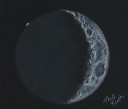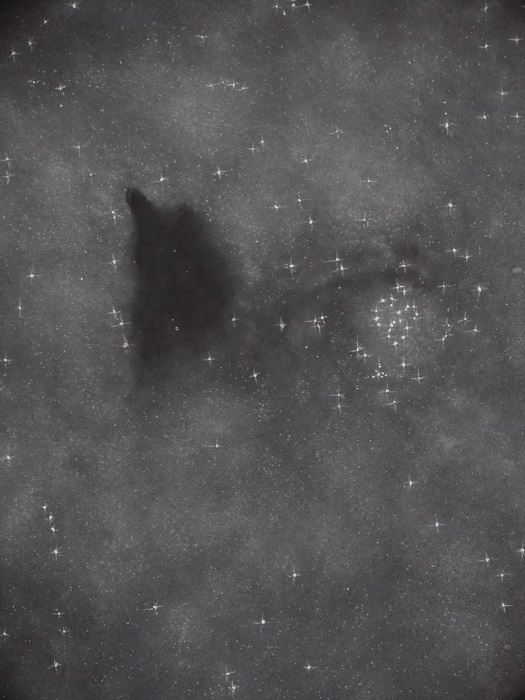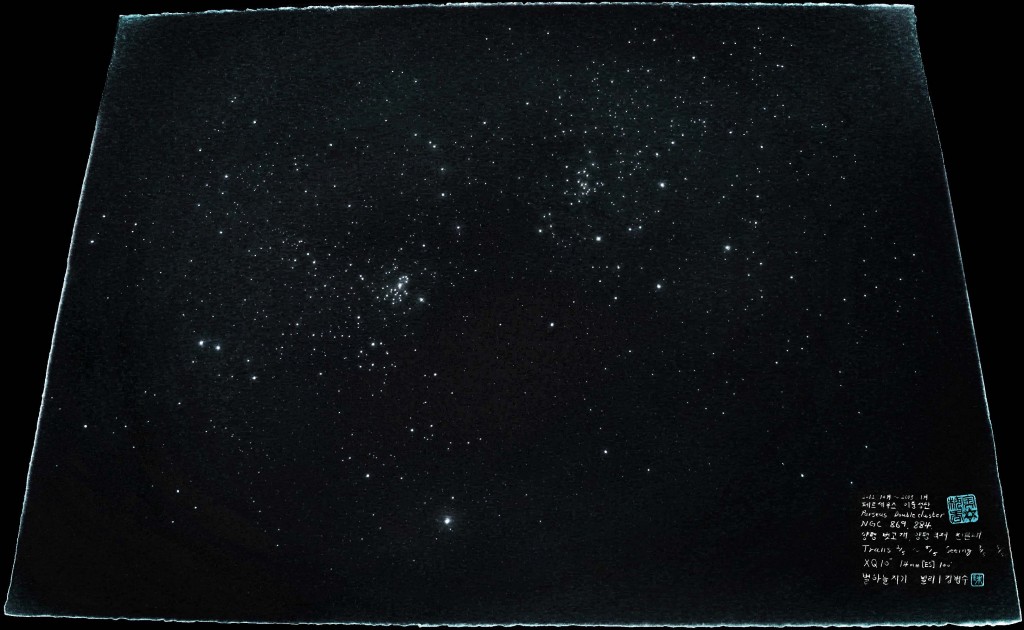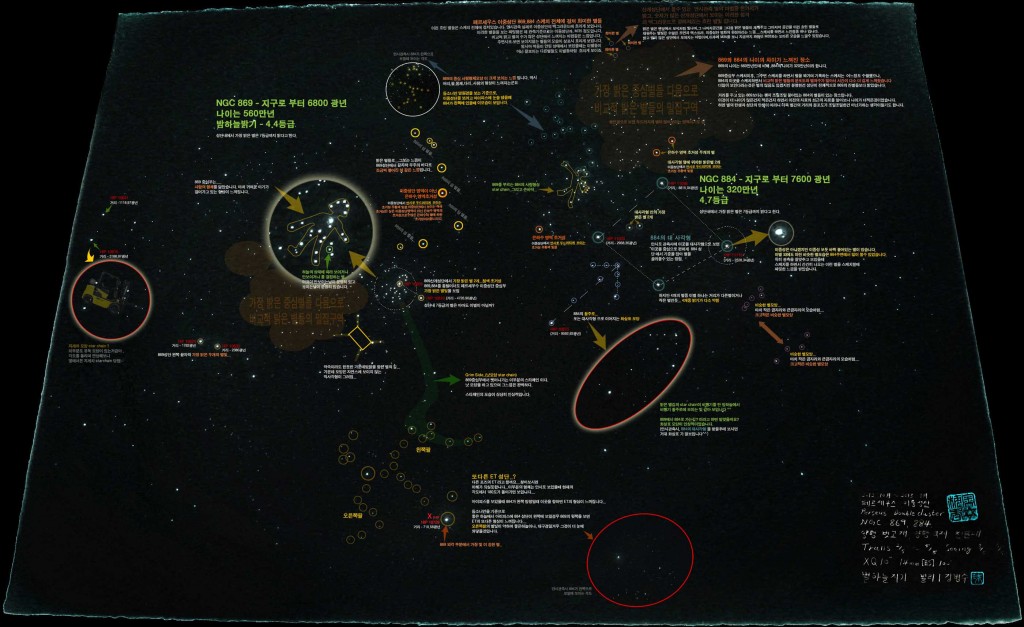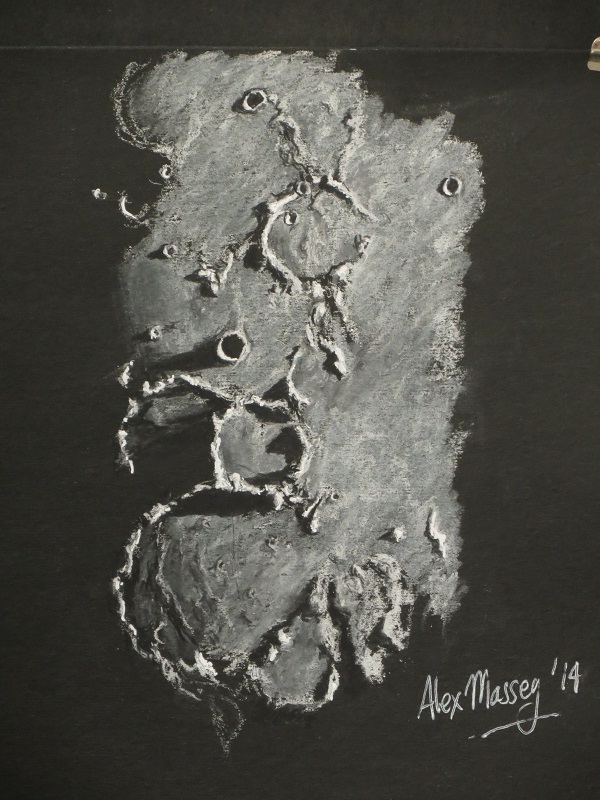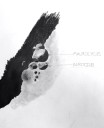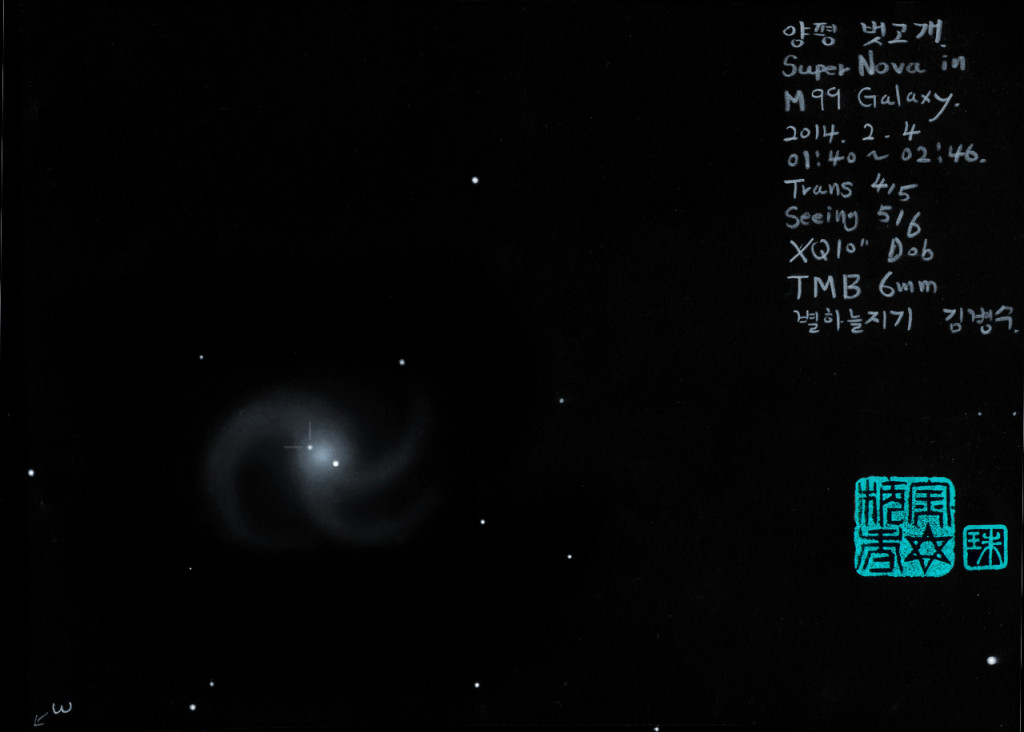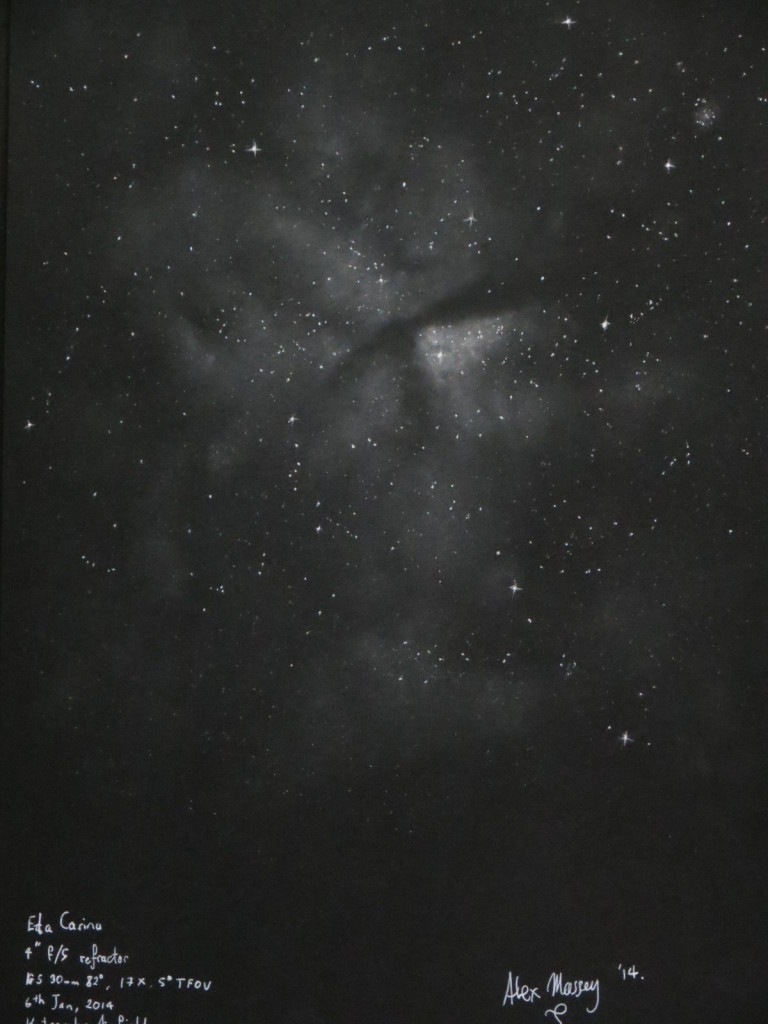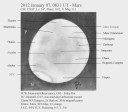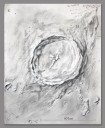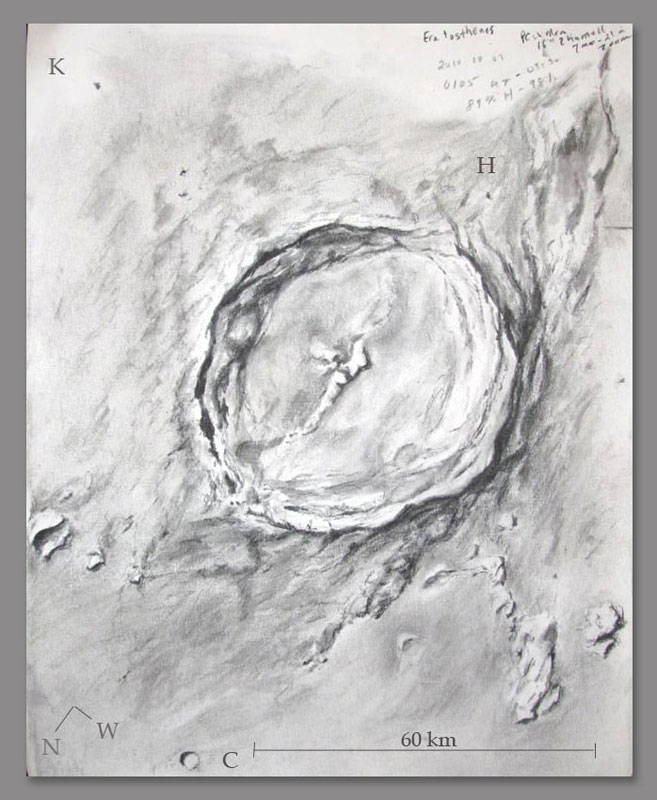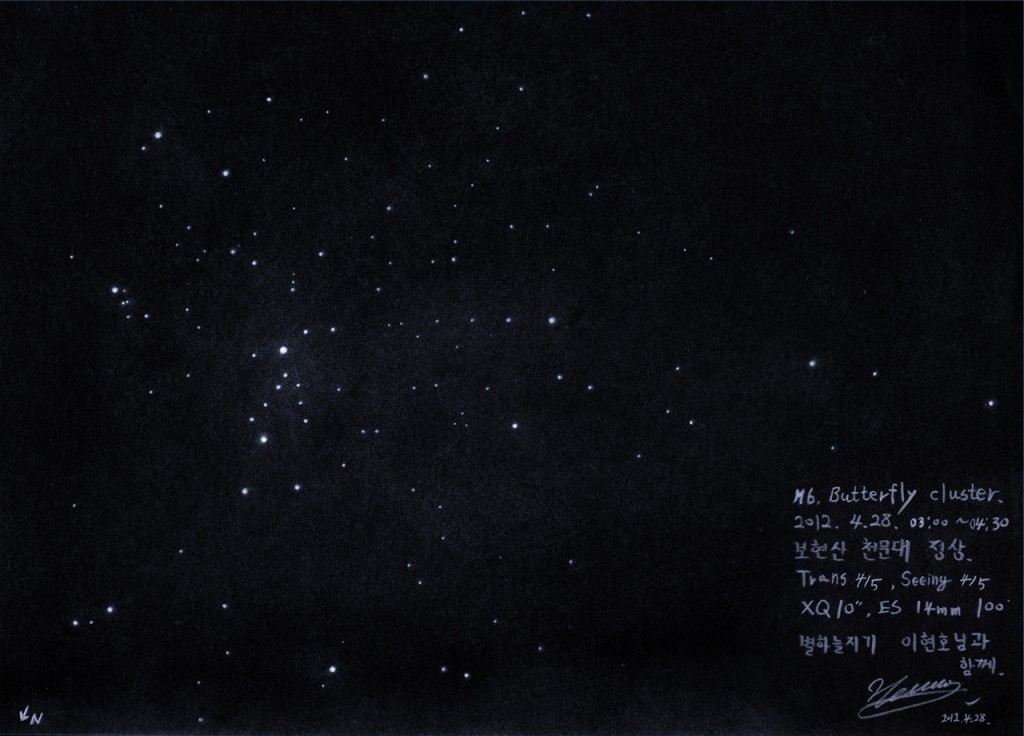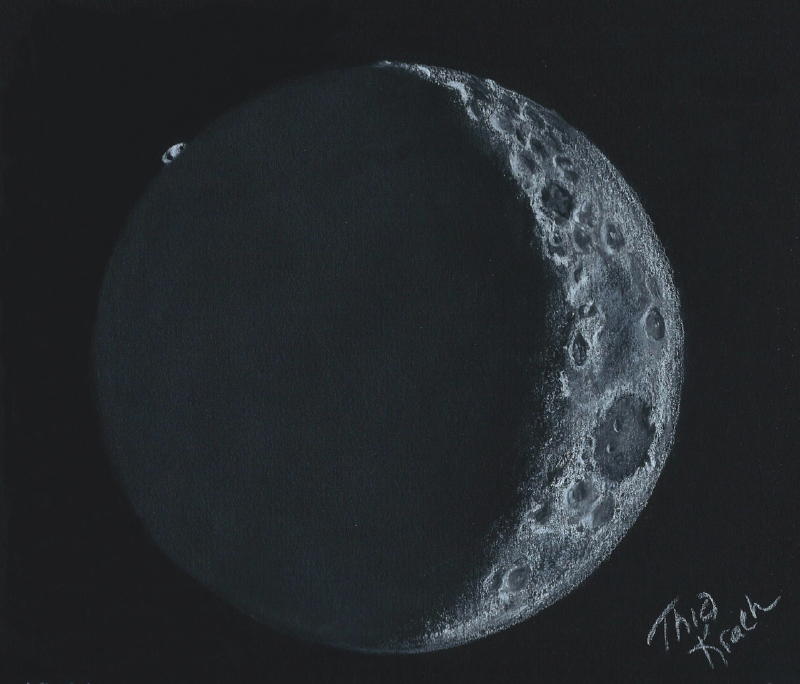
Aloha!
I had plans to go to the summit of Haleakala to observe the occultation of Saturn by the Moon, but clouds and wind kept me closer to home. I was delighted when a patch of sky opened up and I could observe the wonderful phenomenon from home.
As I was observing Saturn get closer to our Moon I was struck by how small it appeared in comparison, appearing the size of some of the smaller lunar craters. I began sketching in the details of the Moon and noticed a few stars I wanted to include. I needed to do some erasures because one of the stars was occulted ~15 minutes before Saturn, an unexpected treat. Once Saturn made it to the limb I could not clearly time the initial ingress as conditions began to deteriorate. It was however brilliantly lit in comparison to the dark lunar limb. I noted time as 19:41:36 HAST when all evidence of Saturn disappeared. My sketch is as Saturn had partially slipped past the limb. I was unable to view egress as the Moon had slipped behind clouds by this time.
Occultation of Saturn by the Moon
Maui, Hawaii
4,000el
SV102ED 79x
9/27/14
Black paper, white & black charcoal
Photoscape to clean up sketch
Cindy (Thia) Krach
